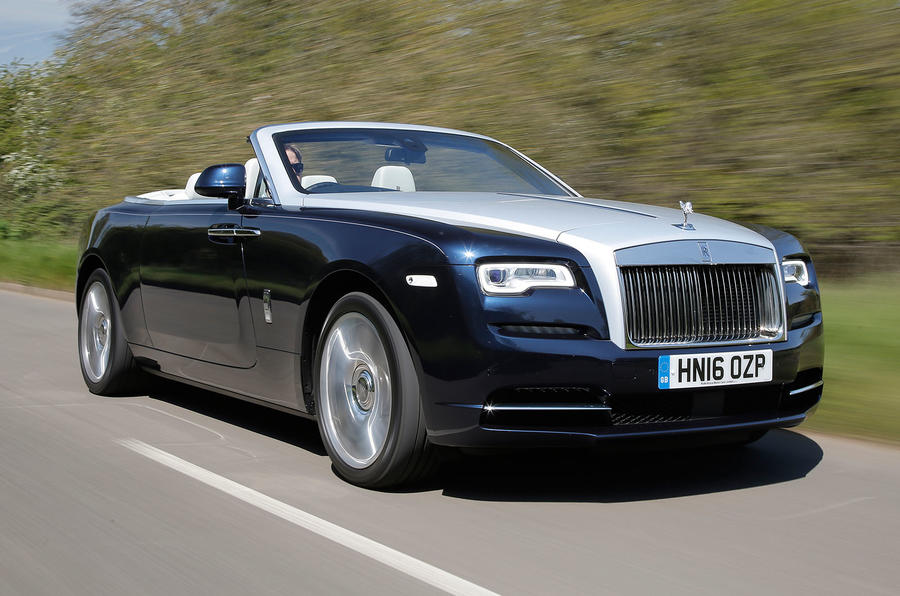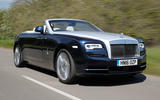What is it?
In broad terms, the Dawn is a Rolls-Royce Rolls-Royce Wraith with the roof removed. But as we discovered on our first meeting in South Africa in March, the Dawn has richly earned its own nameplate. For a start, many of the body panels are new – and, more important, they're much better for it. Giles Taylor, the firm’s design director, told us last year that the car’s new front end constituted a “lowering [of] the formality”, as the brand seeks out a younger (in other words, more middle aged) target audience.
Of course, there’s no better way of lightening the mood than replacing metal with fabric, and it’s in the 21 silent seconds it takes to peel away the new roof that the Dawn’s appeal makes itself felt. Rolls-Royce’s recent past isn’t without dropheads: the Phantom Drophead Coupé variant is less than 10 years old – but that car was very much a chip off the old block.
The latest model, in contrast, seeks to continue the Wraith’s new GT theme; if it's not precisely sporting, then it's certainly hugely refined, exclusive and determinedly debonair. The platform, albeit with 200kg of painstaking reinforcement, is shared, as is the four-seat cabin arrangement. Under the bonnet, there’s the familiar twin-turbo 6.6-litre V12, producing its Ghost-spec 563bhp and 575lb ft of torque. The starting price in the UK is around £264,000 – meaning there’s a premium to pay over the more powerful coupé.
What's it like?
This is still an imposing car. That's probably as it should be to a greasy-fingered member of the proletariat, although, as with the Rolls-Royce Wraith, there’s less of a red-velvet-rope feel than there is with the stately Phantom. That doesn’t prevent the car from prowling about the place like landed gentry, though; nouveau riche fantasy fodder it may well be, but the Dawn still wants to appear well-bred, urbane and as weatherproof as waxed cotton.
Certainly it has the required acreage for the job. The car ought to be easy to pilot for anyone accustomed to docking supertankers; for anyone else, the proportions of that bonnet are going to have you initially stopping a bus ride short of T-junctions and merrily clipping the cats-eyes of B-roads. Not that you’ll feel much of the latter: the Dawn could wallop the corpse of a business rival and you’d barely notice.
Its cruise-liner attitude, plainly softer than the Wraith, is particularly ingratiating. The Dawn is at its best when you wallow in the tar pit of its relaxed body control – all the better if you’re unconcerned about where you’re going or how long it’ll take to get there. Adopt the aimless, languid attitude of a brewery heiress or a Superdraw lottery winner and the car smothers you in likeable, leather-bound waft - one impressively resistant to the ill-effects typically associated with losing a roof.
There may be more than two and a half tonnes to lug around, but the floaty chassis and the minimal effort required at the helm make the Dawn exceptionally easy to drive (once you’ve finally got used to its size). The steering’s unwillingness to self-centre means there’s usually some lock to wind off once you’ve finished turning, although given the lackadaisical speed at which you tend to turn in, it rarely seems like too much fuss.
While asking deeper questions of the handling are not entirely beyond the pale, it does seem even more impertinent than it is in the Wraith; like challenging Clement Atlee to go one on one at pub sumo. What the Dawn is equipped to do, despite its lack of paddles, is billow towards the horizon whenever the need arises. It isn’t quite as abrupt as the Rolls-Royce Wraith in this regard, but if you force the eight-speed automatic gearbox to kick down, the car still obliges mightily.




































Join the debate
Add your comment
Sigh
.
Wallow in the tar pit?